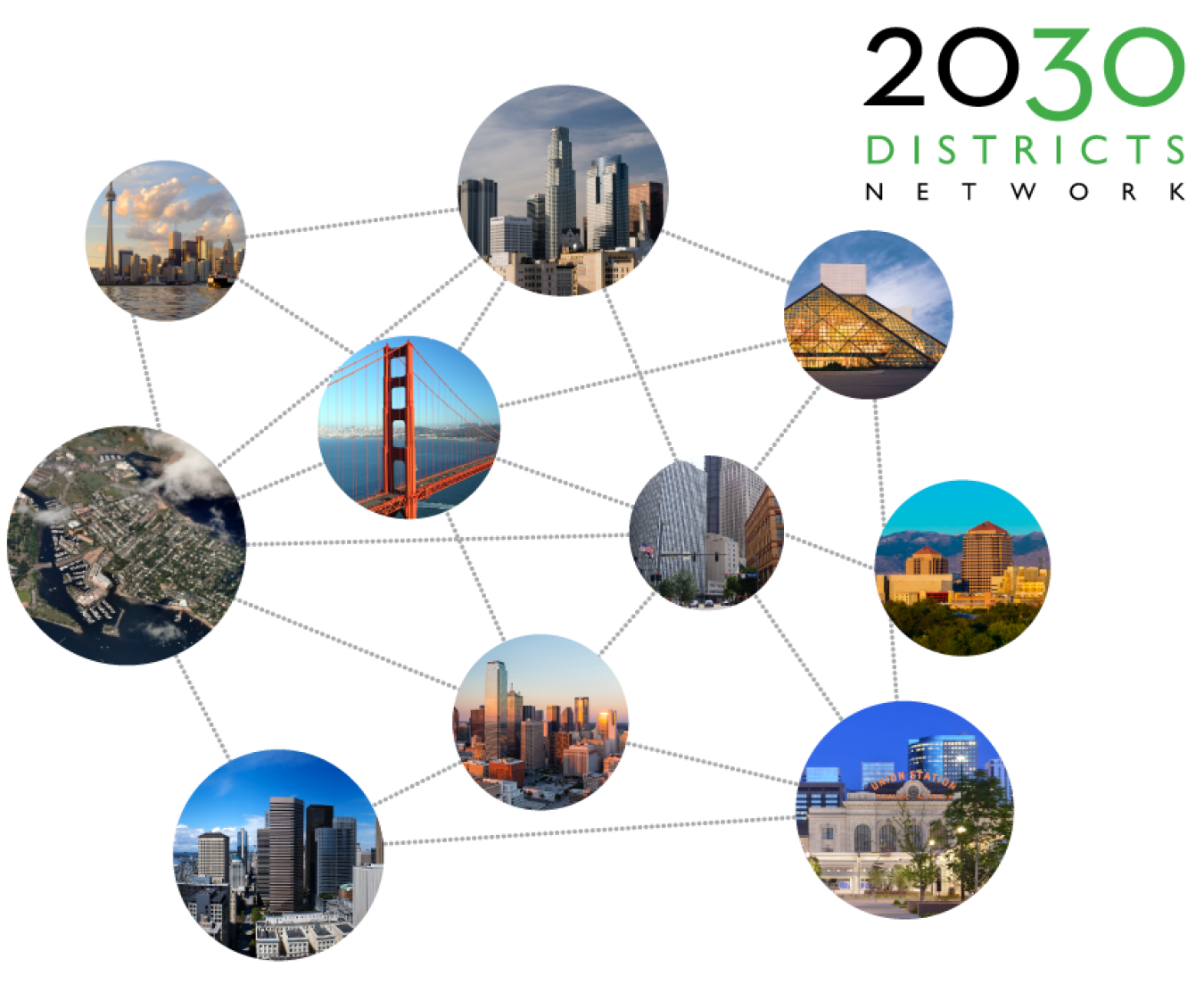Architecture 2030 has been lauded by industry and collaborative colleagues alike for its development and implementation of key strategies to reduce...
July 6, 2016
By Monica Kanojia
Architecture 2030 has been lauded by industry and collaborative colleagues alike for its development and implementation of key strategies to reduce fossil fuel consumption and greenhouse gas (GHG) emissions, as well as stimulating the creation of resilient communities that have the ability to adapt to the consequences of a shifting climate. Garnering recognition through the American Institute of Architects (AIA) Kemper Award for catalyzing the architecture community to address climate change through design, the organization has championed the cause of sustainable carbon neutral planning and design in the built environment through various innovative programs, like its 2030 Districts (District) initiative.
2030 Districts are unique in that each District is comprised of partnerships between private and public entities in designated urban areas across North America that are committed to reducing energy and water usage, as well as transport emissions. The concerted effort made by property owners and managers, local governments, business and community stakeholders has resulted in increased instances of benchmarking, development of strategies to renovate hundreds of millions of square feet of existing buildings, and the construction of high-performance properties. Having expanded to include two new cities – San Antonio, TX and Grand Rapids, MI – the 2030 Districts now represent nearly 300 million square feet with continued expansion expected in the future. All of the districts are a part of the 2030 District Network, which allows each to leverage data available, best practices, and verification methods to monitor progress, ultimately allowing for continued advancement towards Architecture 2030’s overall goal of a carbon neutral built environment.
In an effort to expand its support for 2030 Districts, Architecture 2030 has created the 2030 Districts Marketplace, an online resource intended to offer innovative products at below market prices, through the 2030 Districts Network and in partnership with the U.S. Department of Energy (DOE). The technologies and suppliers featured in the Marketplace are vetted through a competitive process to ensure reliability, effectiveness, and pricing. District Members and Partners are able to save time and money through the ability to obtain multiple bids with one inquiry for certain types of products. Suppliers also benefit through placement within the Marketplace through increased sales, access to institutional markets, and expansion of their customer base.
Architecture 2030, DOE, and Lawrence Berkeley National Lab have also partnered together to develop a District program geared toward improving energy efficiency in small commercial buildings (office, restaurant and retail), which includes a technical toolkit that provides technical guidance, resources, and analysis tools for building owners and operators. Small commercial buildings are identified as properties that are less than 50,000 square feet in size, and represent more than half of the entire commercial building stock, making them an ideal vessel to achieving substantial decreases in energy consumption and GHG emissions. The technical toolkit, developed with $2,000,000 in funding through DOE’s Commercial Energy Efficiency Solutions 2013 FOA, integrates new and existing tools providing users the ability to analyze and evaluate measures for HVAC equipment, interior equipment, lighting, and whole building measures whether individually or in packages. Small commercial building owners in the Seattle and Pittsburgh 2030 Districts have started pilots using the tools to perform energy efficiency retrofits, with full disseminated planned for the other 2030 Districts later this year.
It’s important to note that the 2030 Districts program and the 2030 Districts Network are two facets of Architecture 2030’s robust set of initiatives. With strategies incorporating educational resources, advocacy, and small and large-scale planning, Architecture 2030 is steadfastly working towards transforming the built environment and how we think about resiliency.
Learn more about Architecture 2030 and get involved in the movement toward carbon neutral.

